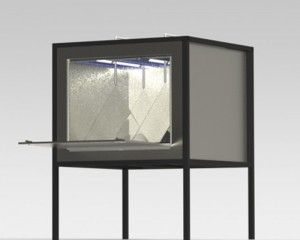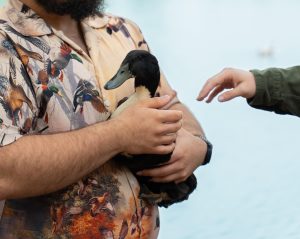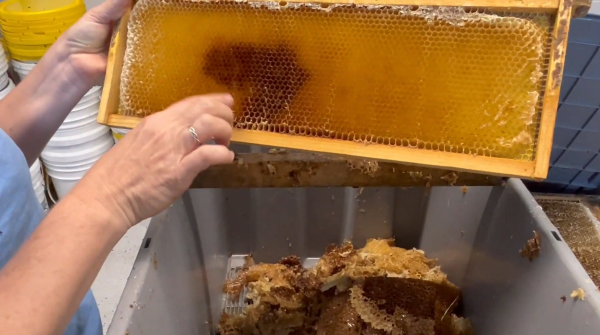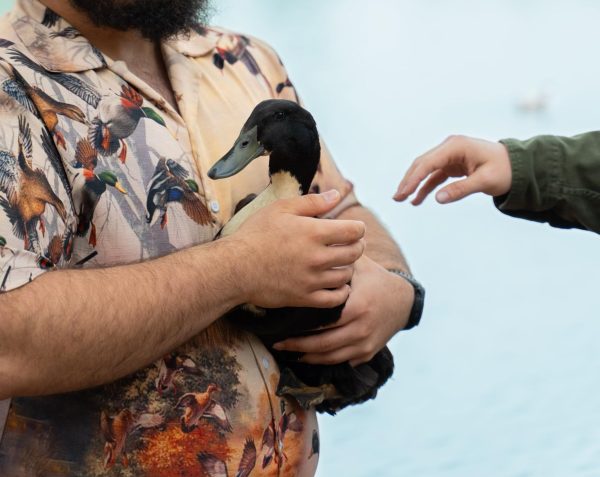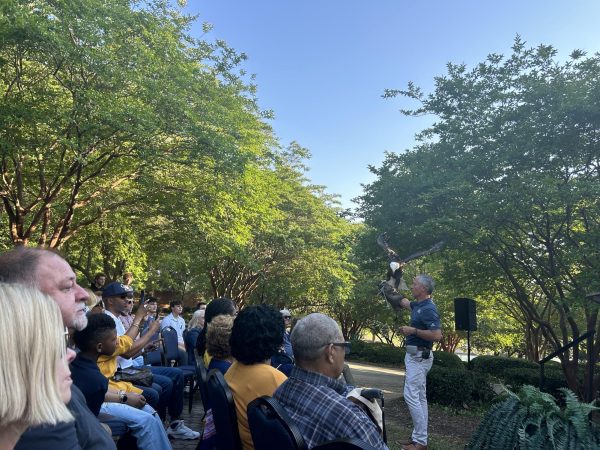GSU research looks to improve roads
March 5, 2013
A Georgia Southern University research team will use a unique device that simulates years of weathering in its search for an improved way to make rubberized asphalt.
The device will be the only known device of its size, capacity and caliber in Georgia and potentially the United States, utilizing all the latest technologies in lighting, water purification and monitoring, Spencer Harp, a GSU graduate with a master’s degree in applied engineering and member of the research team, said.
“This research could revolutionize the way we build our roads,” Harp said.
“The device is being designed to simulate years of outdoor exposure to the elements in an accelerated time, potentially simulating years of natural exposure in just a few weeks,” Harp said.
It will mimic increased levels of UVA and UVB radiation exposure levels while sporadically providing condensation, direct water spray and alternating the temperature of the test chamber.
“What we are going to do is try to make durable green materials using crumb rubber, which is a product from scrap tires,” Dr. Junan Shen, professor of engineering, said.
“It saves money. It’s cheaper than traditional asphalt. From what we found so far, the durability is pretty much the same as regular asphalt, so you are getting more for your money. It is also environmentally friendly,” Matthew Earnest, senior civil engineering major, said.
Nine million rubber tires are produced a year, and a problem that has emerged is how to recycle the tires, but one way to use the scrap tires is to convert the tires into crumb rubber, which is then used to modify asphalt, Shen said.
The classified technique to make crumb rubber from scrap tire is produced from the team’s own research, Shen said.
“Right now we are in the asphalt lab where we are making different mixtures of the asphalt of the crumb rubber. The different mixtures are based on different percentages of the rubber when added in,” Andrew Mahfood, senior civil engineering major, said.
“The asphalt is made and tested in a machine called the (Dynamic Shear Rheometer). It tests the failure temperature of the asphalt,” Mahfood said.
Failure temperature refers to the amount of heat that pavement can take. The higher the failure temperature, the better, Shen said.
Crumb rubber mixed with asphalt is hard to work with, so an additive called VESTENAMER® trans-polyoctenamer rubber is mixed into the solution to make the asphalt easier to pave, Mahfood said.
Shen said, “This project has two benefits. One is we can make asphalt durable and make the pavement last longer, thus saving money in maintenance. Another is to find really practical ways of dealing with the nine million wasted tires.”
For the full story, pick up Tuesday’s issue of The George-Anne.

